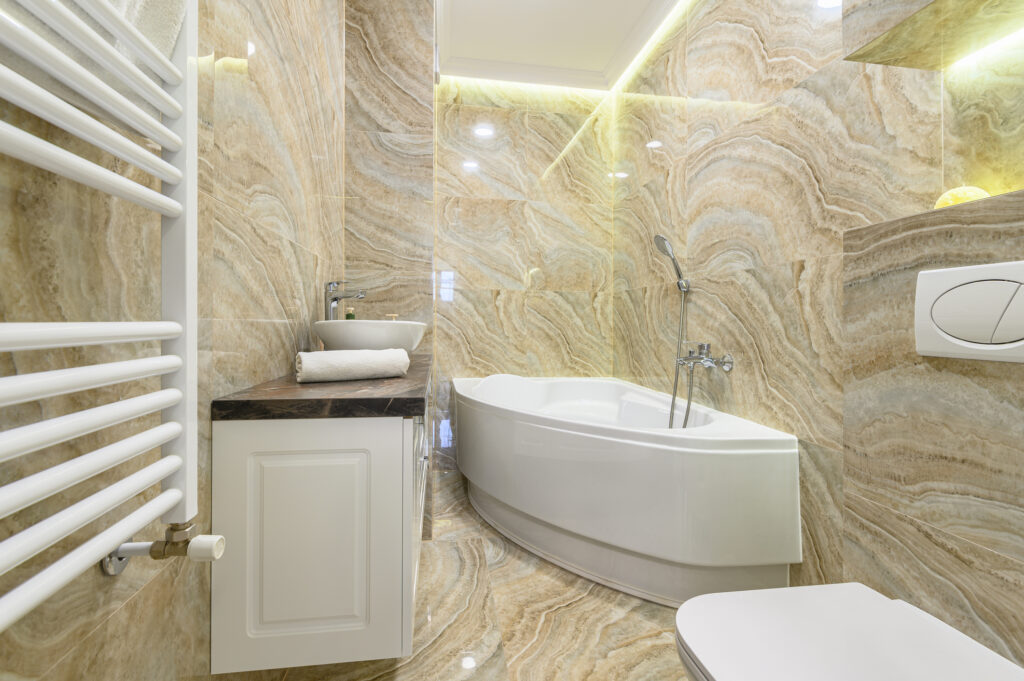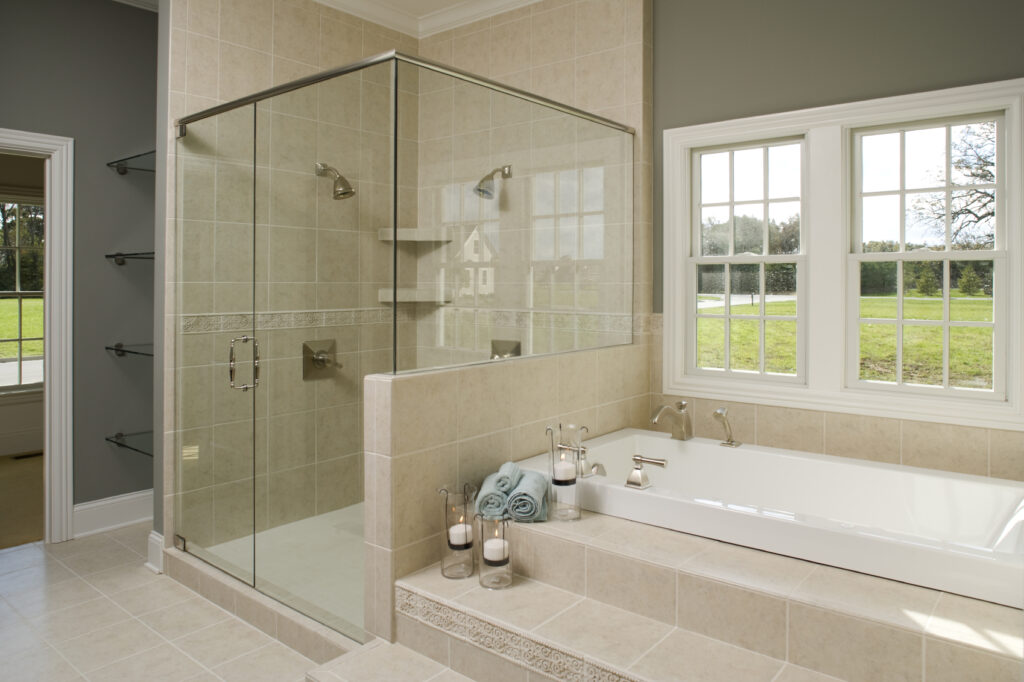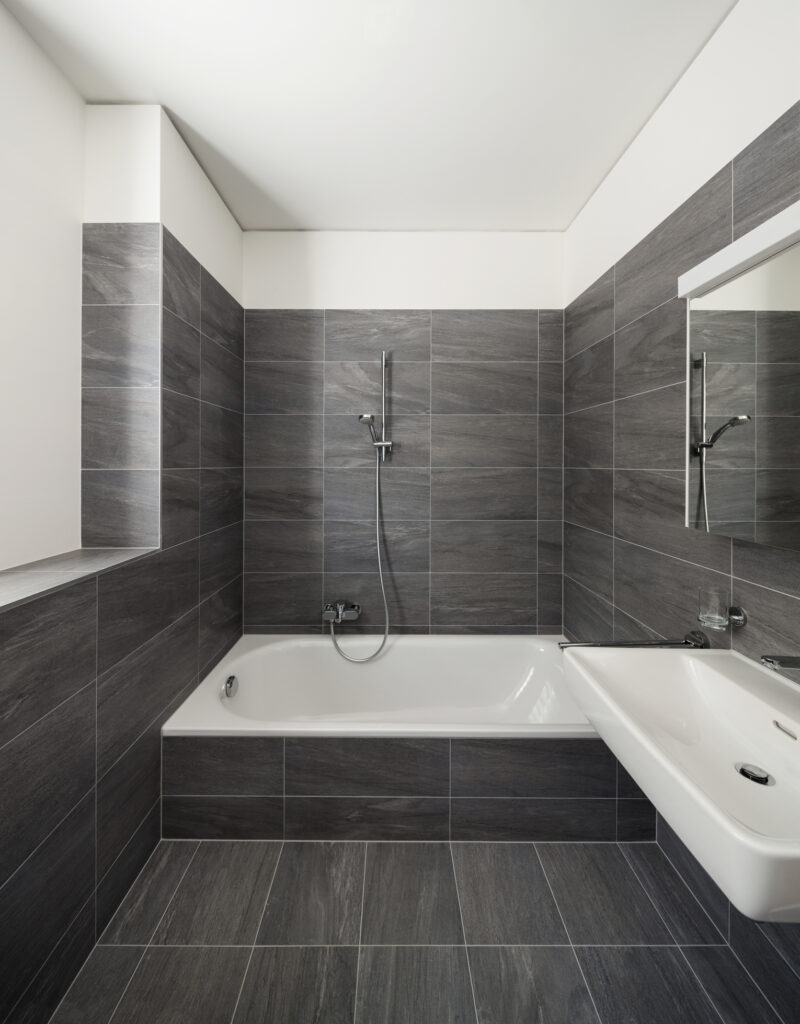Types of Bathtubs For Any Bathroom Layout & Size

What To Keep in Mind When Choosing a Tub
Before diving into different types of bathtubs, consider these factors that could influence which tub is right for you:
- Size: For small bathrooms, prioritize a compact, space-saving option. In a large primary suite, you’ll have more flexibility to incorporate something bigger.
- Style: Your bathtub is a focal point in the bathroom, so its style should reflect your taste and overall design vision. Consider whether you want the tub to blend into the background or make a bold statement.
- Primary use: If you’re remodeling a family bathroom, you might need a durable, practical tub to accommodate kids and pets. If you’re designing a private getaway for adults, you might choose something more delicate in a sweeping, modern design.
- Plumbing connections: Your bathroom’s existing plumbing may limit your options. Some tubs require more extensive plumbing work, while others are easier to install if you’re working with an existing setup.
Types of Bathtubs
You have several types of tubs to consider for your bathroom renovation.
Free-Standing Tubs
Free-standing tubs are elegant, stand-alone pieces not connected to walls or surrounds. They come in various shapes and sizes, from classic clawfoot tubs to modern, sleek designs.
Free-standing tubs are a visually striking choice for large primary suites where you want to make a design statement. However, due to plumbing additions, they require more space and have a higher installation cost.
Corner Tubs
Corner tubs sit at an angle to fit snugly into a corner, making them a smart choice for maximizing space. They often have a large soaking area and may include jets for added luxury.
Just be aware that corner tubs are more difficult to clean and may require special plumbing.
Soaking Tubs
Soaking tubs are deeper than standard bathtubs, allowing you to fully submerge and relax.
These tubs are ideal for a therapeutic bathing experience, though they don’t usually come with jets. Of course, deeper tubs take longer to fill and use more water.
Whirlpool & Jetted Tubs
Whirlpool and jetted tubs offer the ultimate luxury, equipped with jets that provide a massaging effect.
These tubs are perfect for a spa-like experience at home. Be prepared for a higher price point and regular maintenance to keep the jets clean.
Drop-In Tubs
Drop-in tubs are installed into a pre-built deck or enclosure, usually framed in wood and covered with stone, tile, or other materials customized to match the surrounding decor.
The finished look is stunning, but the need to build an enclosure adds to the installation cost.
Undermount Tubs
Similar to drop-in tubs, under-mount tubs involve a pre-built deck. The difference is that the deck extends over the tub’s edge, offering a sleek, finished appearance.
Installation is a little trickier, and a solid structure is required to support the tub’s weight when filled with water.
Walk-In Tubs
Walk-in tubs are designed for accessibility, featuring a door that opens to allow easy step-in entry. These tubs make bathing safer and more convenient for people with limited mobility.
The biggest drawback is that you must sit in the tub while it fills and drains.
Alcove Tubs
Alcove tubs come standard in many homes. They’re installed into a three-wall recess, perfect for small to medium-sized bathrooms, and often double as a shower.
While practical, functional, and affordable, alcove tubs are less luxurious than other styles.
Bathtub Materials
Most bathtubs come in one of four primary materials:
- Acrylic bathtubs are lightweight, durable, and easy to repair if scratched.
- Fiberglass bathtubs are inexpensive and lightweight, though not as durable as other materials.
- Porcelain-enameled bathtubs offer a classic look but can chip or rust if not properly maintained.
- Solid surface bathtubs are high-end options made from composite materials for a luxurious feel and excellent heat retention.
Schedule a Consultation With DiFabion Remodeling
You deserve a bathroom that makes you feel pampered. DiFabion Remodeling would be happy to make this dream come true! Let us incorporate a porcelain free-standing tub into your luxurious owner’s suite, or outfit the kids’ bathroom with a practical acrylic alcove tub.
Our award-winning design/build team offers a collaborative remodeling process that ensures your project runs smoothly from start to finish.
Discover the DiFabion Difference by browsing our portfolio. Then, contact us to schedule a free consultation at your home in Charlotte.
Let’s Talk
Fill out our contact form to request a consultation with our team.
Sidebar
Award-Winning Design Projects
Over the past three decades, we have completed hundreds of home remodeling projects in the Greater Charlotte area and won numerous awards for our innovative designs and commitment to customer satisfaction. See All Projects


























